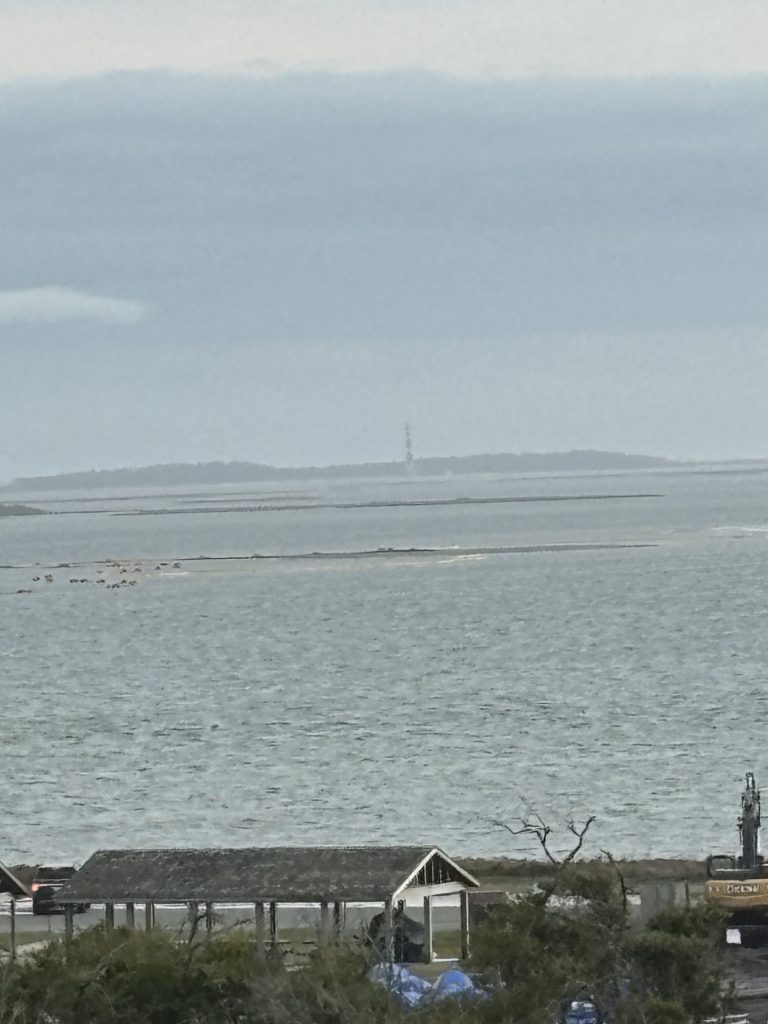Environment
Short Takes
Georgia’s new data center rule increases local controlDecember 1, 2025

By David Pendered
Harkers Island, NC – June 28 – Sometimes dredging operations are simple. That seems to be the case with the project that reopened Cape Lookout to the boating public.
The federal government has completed a dredging operation to deepen the channel that provides access from a protected waterway to the cape, lighthouse and a nearly circular body of water named Lookout Bight. The only other access point is from the Atlantic Ocean, and vessels swiftly encountered shoaled waters.

This $6.9 million dredging operation was conducted primarily to bolster the tourism industry along North Carolina’s coast. The deserted island of Core Banks remains uninhabited by humans. It last served a military need during World War II, when transport ships would gather in the bight to create safety in numbers before dashing through German submarines that lurked offshore in hopes of sinking vessels bound for Europe.
An environmental impact report was released in September 2023 by the US Army Corps of Engineers and the US National Park Service. It predicted minimal disruption to animals and plants. Local media have not reported any sightings of injured animals or vegetation.
Savannah is among the areas where dredging operations do impact wildlife. In Savannah, the corps is constantly balancing the potential harm of dredging of the Savannah River and the Savannah Harbor, which reaches more than a dozen miles from Tybee Island into the Atlantic Ocean.
At the Port of Savannah, the corps has run afoul of advocates for the North American Right Whales and sea turtles. Dredging in the summer protects whales, which gather in the region to give birth in the winter months. Dredging in the winter protects sea turtles, which congregate off Georgia beaches during the summer to lay eggs in nests.
Such a dilemma does not appear to have arisen at the dredging of Barden Inlet. The project was observed by entities including the North Carolina Coastal Foundation, which maintained consistent news coverage through its daily news service CoastalReview.org. The publication’s editor and assistant editor bring to their work expertise gleaned over some three decades of work with the leading local newspaper, Carteret County News-Times. A recent story announcing that the dredging operation was complete did not cite harm to wildlife.
Barden Inlet provides access to the docks near the lighthouse used by the excursion boats that have contracts to take tourists out to the cape. The channel leading to the inlet from Harkers Island has been shoaling for more than 20 years. In addition, the bight has filled with sand and much of it is too shallow to traverse. It’s no longer a suitable anchorage for pleasure boaters seeking to drop anchor for a meal or extended visit.
Meantime, the unoccupied lighthouse keepers house and the lighthouse itself were threatened by erosion. Photos show the water’s edge creeping close to the structures, exposing the area for a storm-driven tide that could flood the land.
Cape Lookout is a popular recreation spot for birding and fishing, shelling and swimming. The lighthouse is known for the black and white diamonds painted on the exterior.
Folklore says painters mixed up the markings for Cape Lookout with those of the next lighthouse to the north, at Cape Hatteras. But the more accurate belief is that the diamonds are directional, with black pointing north and south and white pointing east and west. Cape Hatteras’ lighthouse has a spherical pattern of black and white.

0